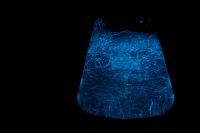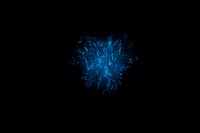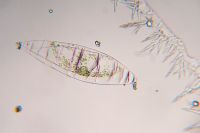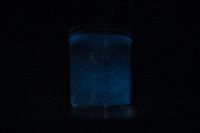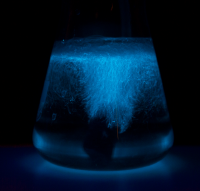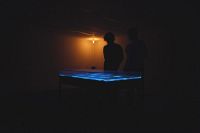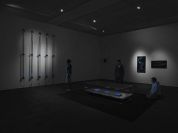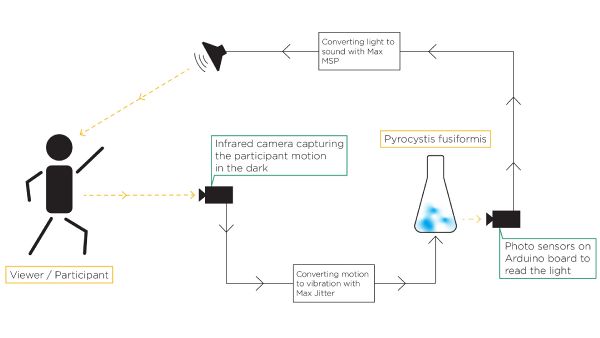This research focuses on two specific areas of Bioluminescent Algae. The first one will be on how to grow them and to take care of them in the best way possible. The second field of interest is in the way they glow; which ways work best for making them illuminate? What are their limits: How long can they glow? How many times?
As an artist working on a biomedia project about multi species communication, this research aims expending the knowledge of my medium, as well as giving me the boundaries within which this artwork can be exhibited.
Bioluminescent Algae - by Frédéric Blais-Bélanger
Pyrocystis fusiformis
Pyrocystis fusiformis is a Bioluminescent Dinoflagellate specie that grows up to 1mm. It is commonly found on surface layers of warm temperate and tropical seawaters. When disturbance in water, they emit blue light as a defense mechanism to avoid being eaten. This theory, called The Burglar Alarm, was developed and experimented by Fleisher and Case in 1995. The sudden flashes of light catches the attention of higher predators of the Dinoflagellate's predator.
Pyrocystis fusiformis under the microscope - by Frédéric Blais-Bélanger
Making it glow
'Pyrocystis Fusiformis' can easily glow. A small disturbance in the water will make it happen. For the purpose of my project, I wanted to find a gentle way to make them glow, with the most amount of light emission.
- Manual Shaking
Manual shaking is of course the easiest one to see the effect as it needs no instruments. It is also the one you will use to see if the they are alive and in good shape. From an aesthetic point of view, it is also an interesting one as you can see precisely each individual organism. You are also more in control of the amount of disturbance you generate.
The downside of it is more on a presentation and ethical way. For the purpose of my work it was not possible since I needed the flask to stand still. Also, I find it un-ethical to let people shake them, which could be an aggressive gesture, for their own entertainment. For an art installation, it has too much connotation of power-relation between both organisms.
- Electromagnetic Stirrer
The electromagnetic stirrer was definitely not my favorite even though it works well. It creates this cyclone which could be highly aesthetic, but at the same time it creates a uniformity in the water. The water becomes blue-cyan and you don't really see all the small dots that for me is much more interesting. It fades out too much the organism by giving more importance to the water that looks like it is glowing.
If you still use it, be careful on the power you use as the 'Pyrocystis' get exhausted quite fast with this technique. It was also another reason for not using it for my installation.
- Air Pump
- Sub-woofer
'Photos of Andreas Greiner's work on his website. Photo by Nathalie Zimmermann (left) and Jens Ziehe (right).'
Note: As our bared eyes can see the glowing perfectly, taking a photo of it more complicated as it needs a long exposure. To make a video of it is even more difficult.
Project
As part of my Projektmodul Art and Biomedia: agencies of being, I am working on creating a platform where the viewer can perform a social interaction with a different specie by the forms of sound and dance.
Link to full project: GMU:Art and Biomedia/Frederic Blais-Belanger
